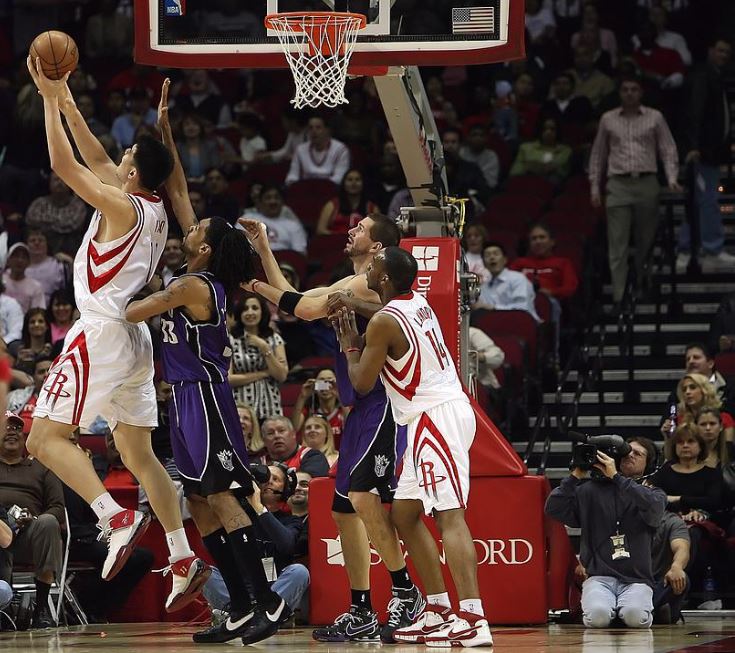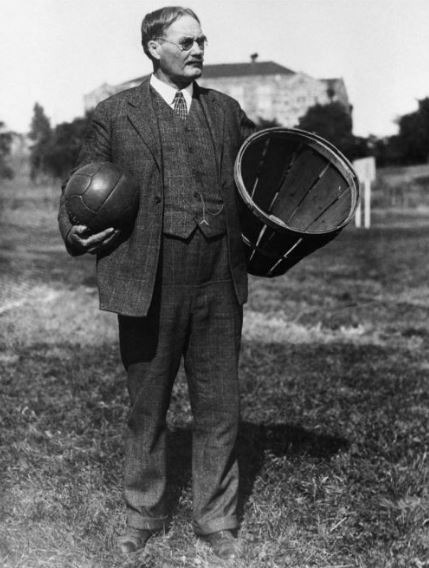Among all team sports, there is no doubt that basketball is the most popular, and we have James Naismith to thank for the invention of this great sport. If you’re a fan of basketball or just sports in general, learning more about James Naismith should be high on your priority list.
Early Life of James Naismith
Coach and inventor James Naismith was born in Almonte, Ontario, Canada, on November 6, 1861. He lost both parents to typhoid fever; when he was still a little child and moved in with his aunt and uncle on their farm in Almonte, where he remained for many years. Growing up, he found farm work quite enjoyable and was very excellent at it. However, he chose to spend his time as a child playing “catch” and “duck on the rock,” a game that would later prove to be an important influence in basketball development.
From the very beginning of his collegiate career at Mc Gill University in Montreal, Canada, Naismith demonstrated that he was an exceptionally versatile athlete. He participated in various sports at the school thanks to his extraordinary abilities and was a member of the gymnastics, football, soccer, and rugby teams. Naismith was a center in football and won multiple medals for his outstanding performances in gymnastics. Around this time, he made his first pair of ear paddings for his usage, which inspired the invention of a football helmet. Naismith only moved to the United States when he was 30 and got a job as a Physical Education Teacher. Naismith was a brilliant man who also held a Bachelor of Arts degree in Physical Education and his Bachelor of Arts degree in Medicine.
The Invention of Basketball
This famous game that so many of us have grown to adore was originally intended to serve as a form of sports diversion for the kids during the brutal winter months in New England. In the fall of 1891, Luther Halsey Gulick Jr., the head of Springfield’s Physical Education Department, appointed him an instructor of a rowdy group of boys. He was in desperate need of an indoor activity that would keep them occupied and allow them to release some of their riled energy. His first thoughts were to look into outside games like football and lacrosse. However, they were either dangerous or unsuitable to play indoors. A thorough investigation into other popular sports at the time led him to develop the concept of “Basket Ball.” He devised a game using two fruit baskets and a soccer ball.
While working on his newfound fame, he was self-conscious of injuries and sought to minimize them. So he raised the baskets 10 feet high to make the post impossible to guard. After teaching the students how to score, he blew a whistle to start the first basketball game. The players began hitting, tackling, and kicking in the spirit of competition. There were several black eyes, an unconscious student, and a separated shoulder when the game ended. After the disastrous first basketball game, Naismith created the 13 Rules of BasketBall, which he documented in his sportsbook for the first time. “A player cannot sprint with the ball,” “No shouldering, holding, striking, shoving or tripping,” and “The time shall be two fifteen-minute halves” were among the rules included. To help the boys learn how to play, he posted the game’s 13 rules on the gym bulletin board before class. Just months after the first basketball game, the game spread like wildfire.
Along with images of the 13 Rules, the game was published in the YMCA magazine, which helped popularize it. People wanted to honor the game’s creator by calling it “Naismith’s Ball,” but he refused. When Naismith went to the University of Kansas six years after the invention of basketball, the school immediately started a basketball program for collegiate athletes. Though he invented the game, Naismith had the lowest coaching record in the program, with a 55-60 recorded score.
Life Outside Basketball
The basketball community will revere Naismith for the rest of time, but the invention of the football helmet was also a significant addition to the sport. Because of its popularity, basketball was included in the 1904 Summer Olympics as a showcase sport. Though Naismith founded the sport and coached it for more than 30 years, he had no desire to be recognized for it. His favorite sports were gymnastics and wrestling, which he thought to be superior forms of physical exercise.
Naismith volunteered as a chaplain with the Kansas Army National Guard in 1916. After Pancho Villa’s attack earlier, the regiment guarded the Mexican border from July to October. In this job, Naismith created sports leagues and counseled soldiers. When the US entered WWI in April 1917, he volunteered as a YMCA chaplain. In September 1917, the YMCA dispatched him to France as an “overseas secretary” to improve American troops’ cleanliness. Nineteen months later, in March 1919, he returned to Kansas.
Personally, Naismith repulsed slavery, and this is because, when he was growing up, segregation was the law of the land, and African-Americans had virtually no civil rights. Naismith kept trying to get black athletes into the Jayhawks squad during his time, even though it was nearly impossible. But he was able, although all black kids were given automatic passing grades and were never allowed to use the pool to get them to utilize the pool for swimming lessons.
Moving on to his personal life, he had two marriages. Naismith and Maude Evelyn Sherman were married on June 20, 1894, and had five children together. But sadly, Maude died in 1937 at the age of 67, and their 43-year marriage came to an end with it. Two years after, on June 11, 1939, he married Florence B. Kincaid for the second time.
Naismith Legacy
Later in life, Naismith witnessed the rise of basketball as a global phenomenon. In 1936, during the summer Olympics, basketball was made an official Olympic sport. Naismith handed out medals for victorious teams. He was also a key player in creating the National Association of Intercollegiate Basketball in 1937.
James Naismith was diagnosed with a massive cerebral hemorrhage just four months after marrying Florence. He died on November 28, 1939, at the age of 78, nine days later after his diagnosis at Lawrence’s house. Naismith was laid to rest with his first wife, Maude, in Lawrence Memorial Park. A basketball hall of fame named for him was established in his honor in 1959. The Naismith Awards are given to the most outstanding college basketball players and coaches each year.
The Naismith International Basketball Foundation auctioned off Naismith’s original handwritten rules in 2010 for $4.3 million, a record for sports memorabilia. David Booth, a Lawrence, Kansas native and businessman, bought and gave the documents to the University of Kansas. Profits from the sales went to the Naismith International Basketball Foundation.



